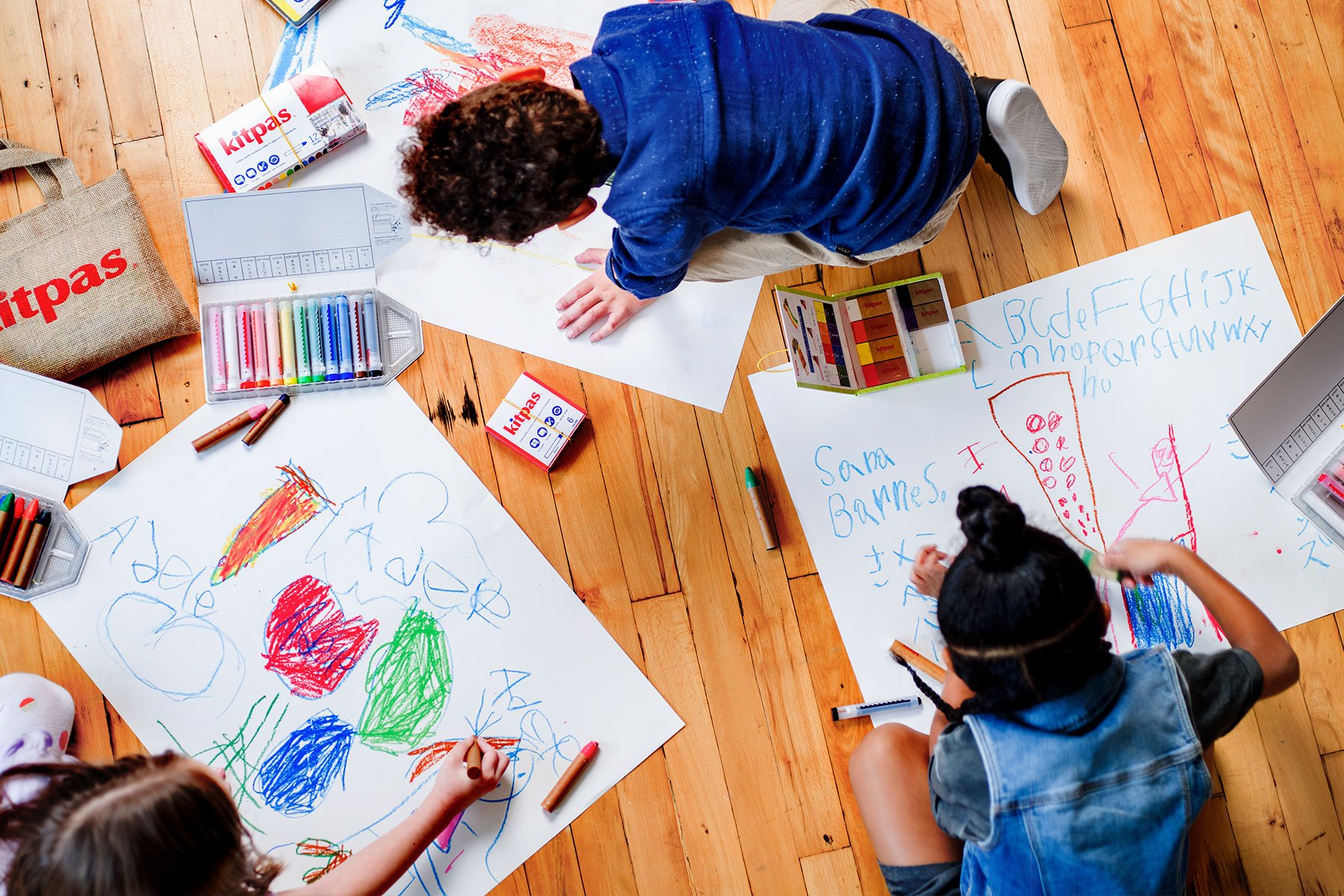
Q & A
-
A: We are happy to say that Kitpas products meet European safety standards for children's products (EN 71, Part 3) as well as U.S. standards, meaning that they are nontoxic and safe for children over three years old. They are also AP-certified (conform to ASTM D-4236). However, Kitpas can be a choking hazard for small children, just like any other small toy that fits in a child's mouth. Adult supervision is recommended when small children (even those over three years of age) use Kitpas to make sure they do not put them into their mouths. In the event a child has eaten or swallowed a Kitpas stick, drinking some water or milk will help the child excrete it out of the body quickly. Please seek immediate help or consult with a doctor if your child feels sick or nauseous. If a child accidentally licks a Kitpas stick, have the child rinse their mouth out completely by gargling. For children who cannot gargle, wipe inside their mouth with a wet towel.
-
A: Yes. You can use Kitpas on whiteboards (but not on blackboards). Just note that you should wipe it off with a damp cloth or a Kitpas cleaner cloth (sold separately). Erasing with a whiteboard cleaner does not really work.
-
A: Our Kitpas sticks draw on most non-porous surfaces, but they will stain some materials and may not be erasable depending on the surface. Hence, we do not recommend drawing on cars or metal as Kitpas may not be able to be erased (especially if left over time).
-
A: Yes. You can draw bright, smooth lines on paper just as you would with crayons. Although Kitpas cannot be erased from paper, Kitpas are water-soluble, so you can enjoy applying some water or blurring and mixing colors with a brush and turning your drawings into watercolor paintings.
-
A: Drawings on rough, porous materials––such as wood, paper, plastic or wooden chalkboards, walls and furniture––are NOT erasable, so do not use Kitpas on those surfaces. Drawings on smooth glass or whiteboards can be erased, but there are some materials (e.g., painted whiteboards) that will not stay erasable, so please always test on a small area first before using Kitpas. Also, if you leave your Kitpas drawings on whiteboards or glass for a long time, they won’t be erasable, so we recommend erasing the drawings the same day.
-
A: If the glass has stains or dirt stuck on the surface when you draw on it, Kitpas may be hard to remove. Also, if you leave your Kitpas drawings on the window for over a month or the drawings have dried after being wet with condensation, rain, or water vapor, they will become resistant to being wiped off. In that case, use a detergent with abrasives to rub them off or use nail polish remover. Using an eraser is also effective. DO NOT draw on frosted glass or glass with a special film, as the color will remain on porous surfaces and will not be erasable.
Visit the following link (our Facebook page) for more details on how to erase kitpas when they have become difficult to remove:
-
A: No. Please do not use Kitpas on wallpaper, even if it is made of vinyl, as the oil component in Kitpas will be absorbed into the material and Kitpas marks won’t be erasable.
-
A: If you apply black or dark-colored Kitpas over a wide area of wire-reinforced glass or double-glazed windows, thermal cracking may occur. So do NOT leave Kitpas drawings on the glass for more than an hour. Thermal cracking is caused by the temperature difference on the glass––the surface of the glass warms up when exposed to sunlight while the part hidden in the frame remains cool. Wire-reinforced glass and double-glazed windows are particularly prone to thermal cracking. The thicker and the larger the glass, the more thermal cracking occurs.
-
A: You can remove Kitpas stains on your skin or the surface of your clothes by washing with water or rubbing and washing with soap. When Kitpas materials have permeated deep into fabric and a stain persists, dissolve a stain-removing detergent in lukewarm water, soak the fabric in the solution for about one hour, and then hand-wash it by rubbing. If the stain still doesn’t come out, please bring it to a stain-removing professional.
Please note that the stain may not be removed completely depending on the type of fabric.
-
A: It seems that you can print in most cases, but unfortunately we do not have our own lab data. Please try first to find out whether it will work or not.
-
A: Please do not leave Kitpas in places with temperatures over 50℃(122°F) for a long time, such as somewhere in direct sunlight or in a car under scorching sun. If you leave Kitpas in a place that is over 50℃ (122°F), they will soften and become unusable. However, if you return the Kitpas to a place at room temperature, they will harden and become usable again.
-
A: They are slightly alkaline (pH 7.5) and not acidic (measured by Yokosuka Environmental Technology Center Co., Ltd.).
